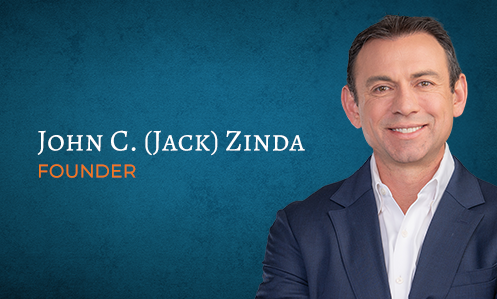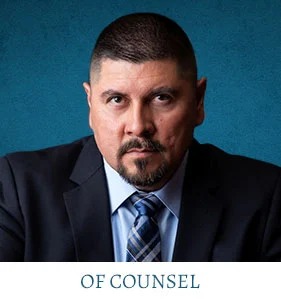CALL (800) 863-5312 to speak with Aurora workplace accident lawyers for free
If you have been injured in a workplace accident, you may be eligible to receive workers’ compensation benefits from your employer. You may also be entitled to additional damages in a separate personal injury claim if your injury was caused by the negligence of a third party. The Aurora workplace accident lawyers from Zinda Law Group have represented clients in workplace injury cases nationwide. Overall, our experience representing clients allows us to be precise when we are advocating and effective in obtaining just compensation for medical expenses and other losses suffered.
No matter how your workplace accident injury occurred, our attorneys can assess the facts of your case and help get you compensated for your losses. To have an Aurora personal injury lawyer from Zinda Law Group evaluate your claim for free, call (800) 863-5312.
Am I Covered by workers’ compensation insurance?
According to the Colorado Department of Labor and Employment (CDLE), Colorado employers are required to carry workers’ compensation insurance if they have one or more employees. This requirement is enforced even if the employees are part-time or family members. However, there are some professions that the coverage requirement does not apply, including:
- Volunteers
- Contract workers
- Casual maintenance or repair workers
- Real estate agents and brokers who work on commission
- Ranch workers who the employers pay less than $2,000 per year
- Workers who work for less than 40 hours per week and less than five days per week
If you suspect that your employer doesn’t carry workers’ compensation insurance or is not approved to self-insure, make sure to mention that during your case evaluation. If it’s determined that your employer was not carrying coverage, you can report the violation to CDLE. Should you have any questions about your employer’s insurance coverage or how to report violations, you can call (800) 863-5312 to speak with an experienced Aurora personal injury attorney who can help you.
What types of Workers’ Compensation benefits Are available to Injured Workers?
Victims eligible for workers’ compensation benefits may have different types of benefits available to them due to the nature and circumstances of their injury. In Colorado, the types of workers’ compensation benefits that one might be entitled to include medical care, wage benefits, and death benefits.
Medical Care
In Colorado, an injured worker may be entitled to have the employer’s workers’ compensation insurance company pay for all their accident-related medical expenses. Medical expenses covered under workers’ comp includes all reasonable and necessary medical costs associated with the work-related injuries, such as:
- Surgery
- Bloodwork
- Doctors’ visits
- X-rays and MRIs
- Related travel expenses
- Prescription drug medications
In accordance with Colorado law, if a person is hurt at work, workers’ compensation should cover all medical expenses.
Wage Benefits
An injured worker qualifies for wage replacement benefits if their doctor orders them to miss more than three regular work shifts or if their employer is unable to find them work because of their limitations. The state of Colorado has determined the amount of this benefit to be two-thirds of the worker’s average weekly wage for the duration of time they are unable to work. If an injured worker is earning less or not working at all because of job restrictions, they are also eligible for wage replacement benefits.
Death Benefits
In accordance with Colorado revised statute § 8-42-114, in the case of death, dependents of the deceased generally receive two-thirds of the deceased employee’s average weekly wages. This amount may be lower depending on how closely related the worker’s surviving dependents are. Furthermore, children’s benefits stop once they’ve reached adulthood and a surviving spouse’s benefits will stop if they get remarried.
Vocational Rehabilitation
Although many states offer vocation rehabilitation benefits through workers’ compensation, Colorado is not one of them. Accordingly, while a workers’ compensation insurer must cover the cost of physical or medical rehabilitation, there is no legal obligation that workers who are unable to return to their pre-injury jobs receive vocational rehabilitation.
If you believe that you have been denied a workers’ compensation benefit owed to you, call the Aurora workplace accident lawyers from Zinda Law Group at (800) 863-5312. An Aurora personal injury attorney from Zinda Law Group can assess the facts of your case and determine what benefits you are eligible to receive.
The most common Injuries resulting from Workplace accidents in Colorado
There are a number of injuries one may sustain as a result of a work accident. These injuries can range in severity, but the most serious injuries often require extended time away from work. CDLE has developed Medical Treatment Guidelines which address the occupational injuries that most frequently occur in Colorado’s workers’ compensation system. The following highlights the most common workplace injuries in Aurora, as well as how CDLE recommends that these injuries are diagnosed:
Lower Back Pain
Worldwide, lower back pain is the leading cause of disability. Employers incur large costs because of back-related workers’ compensation claims. According to data from Martindale-Nolo, the typical settlement for back injuries was between $20,000 and $25,000. Furthermore, this data is supported by research conducted by the Nation Council of Compensation Insurance (NCCI). NCCI reports that the typical workers’ compensation claim for a lower back injury was worth around $37,000. For lower back pain injuries, CDLE recommends re-evaluation every three to four weeks to ensure the effectiveness of treatment.
Traumatic Brain Injury (TBI)
Traumatic brain injuries are often the result of a blunt force strike to the head or body. In some instances, objects penetrate the skull and go through brain tissue, such is often the case among construction workers for suffering a TBI because of materials falling from a great height. According to CDLE, victims who suffer head injuries should be assessed to determine their level of trauma exposure. In making that assessment, the injury should be categorized as either mild or moderate to severe and treated accordingly.
Thoracic Outlet Syndrome (TOS)
TOS is a neurovascular condition that affects the upper body and is occasionally brought on by conditions at work, such as jobs that require repetitive movement of the upper extremities. TOS specifically refers to a collection of illnesses caused by compression, injury, or irritation of the nerves and/or blood vessels (arteries and veins) in the lower neck and upper chest area. The region between your lower neck and upper chest where nerves and blood vessels are contained is known as your thoracic outlet. This region will be closely examined if a doctor suspects that the victim suffers from TOS.
Shoulder Injury
In 2019, OSHA reported that of 67,000 shoulder injuries, around 40,000 of them caused workers to miss 22 days of work on average. As CDLE explains in their medical guidelines, shoulder pain can be difficult to diagnose for many reasons. One reason is the complexity of the human shoulder. The parts of the shoulder can make a variety of movements, all while being confined by a small joint space.
Cumulative Trauma Conditions (CTC)
Cumulative trauma refers to damage caused by repetitive motions required for work-related tasks. Indeed, repetitive motions are part of some professions. For example, assembly line workers and computer programmers both experience conditions related to cumulative trauma because of the repetitive motions necessitated by certain aspects of their job. Over time, repetitive motions can harm nerves and result in specific injuries like carpal tunnel syndrome. According to the CDLE guidelines, diagnosis typically involves physical examinations, X-rays, and electrodiagnostic studies.
Lower Extremity
Lower extremity injuries are common in all types of work environments but result mostly from a short list of events. For example, slips, trips, falls, walking into objects, machinery entanglement, and vehicle crashes are the usual culprit when it comes to lower extremity injuries. These injuries can range in severity from minor bumps and bruises to sprains, broken bones or torn ligaments, and even amputations. According to CDLE, diagnosis involves assessing the functional limitations caused by the injury.
Complex Regional Pain Syndrome (CRPS)
Complex Regional Pain Syndrome is a general term used to describe excessive and prolonged pain and inflammation that may follow any injury. According to the National Institute of Neurological Disorders and Stroke, the outcome of CRPS is highly variable. For example, if the injured nerve regrows, the illness is likely to be mild and recovery should happen over months to years. If the injured nerve does not regrow, the effects of the injury can result in long-term disability. As the CDLE guidelines explain, the clinical criteria used for diagnosing CRPS are still heavily debated.
Cervical Spine Injury (CSI)
Cervical spine injuries ranging from serious to catastrophic can cause deadly workplace accidents. Of those who’ve survived cervical spine injuries, they are likely to suffer from neck pain, muscle spasms, and a compromised airway. According to CDLE, prolonged periods of immobility are detrimental people to recovering from this injury. To diagnose CDLE, physicians monitor the victim for signs of progressive neurological deficit and upper extremity weakness.
Chronic Pain Disorder (CPD)
The Institute of Medicine estimates that approximately 100 million adults suffer from chronic pain in the United States. Chronic pain often develops as the result of persistent acute pain resulting from neuroplastic changes in the central nervous system. In layman’s terms, after consistent and prolonged injuries, pretty much everything starts to hurt. For this reason, it can be difficult to distinguish CPD from a new injury and is difficult to accurately diagnose.
Of course, there are many different injuries a worker could suffer while on the job. However, knowing the common injuries that workers suffer in Colorado may better prepare you to avoid an accident and handle it better if it occurs. If you believe that you are suffering from any of these described injuries contact your physician immediately. Call us at (800) 863-5312, and we can assess the facts of your case to determine your eligibility for compensation.
When should I report my work accident?
In Colorado, injured workers and their employers are required to submit specific information regarding their injury to CDLE. For instance, CDLE requires insurance providers to submit a First Report of Injury (FROI) to the Division of Workers’ Compensation (DOWC) within 10 days of a worker’s injury or occupational disease causing more than three days/shifts of lost time, permanent impairment, or death. For workers, CDLE requires that injured workers report their injuries to their employer within four working days of the injury or provide notice of the injury in writing if four days have passed.
What is a Statue of Limitations?
A statute of limitations is a law established by a state legislature that sets forth the maximum amount of time following an injury when a legal proceeding may be initiated. When the time specified in the statute has elapsed, a claim may no longer be filed or, if it is filed, may be dismissed because the claim has been barred by the passage of time. The reasoning is that the statute of limitations ensures that claims are brought within a reasonable amount of time after the injury occurs. Accordingly, injured workers are better off bringing their claims as soon as possible to prevent conflict with the statute of limitations.
When should I file a Workers’ Compensation Claim?
It’s important to recognize that reporting your injury to your employer is not the same as filing a workers’ compensation claim with CDLE. Injured workers must file a workers’ compensation claim with DOWC within two years of their injury. Colorado law stipulates that if you don’t file a claim within this time, you may not receive any benefits. The clock will start running once your employer has filed your workers’ compensation claim with their insurance.
Schedule your free case evaluation with one of our Zinda Law Group’s Aurora workplace accident lawyers today
We understand that there is much to be concerned about after a workplace accident. Indeed, many of our clients come to us worried over the loss of their income, the rising cost of medical bills, and the effect that their injury will have on their life in the future. A workplace injury lawyer from Zinda Law Group understands the pain and anguish that follows a serious workplace accident, and that is why we try to explore all the opportunities for our clients to be compensated for their injuries.
To hear clients’ stories and to understand how we can help, we offer 100% free case evaluations at no cost to you. Additionally, you won’t have to worry about upfront costs because we offer a No Win, No Fee Guarantee, which means that you will pay nothing unless we achieve a favorable settlement, judgment, or verdict for your case. Call (800) 863-5312 to set up a free consultation with a workplace injury lawyer from Zinda Law Group today.
Meetings with attorneys are available by appointment only.

John (Jack) Zinda
Founder / CEO
Over 100 years of combined experience representing injured victims across the country.
Available 24 / 7|Free Consultation
Neil Solomon
Partner
Real results matter. We do not get paid unless we win your case.
Available 24 / 7|Free Consultation


























